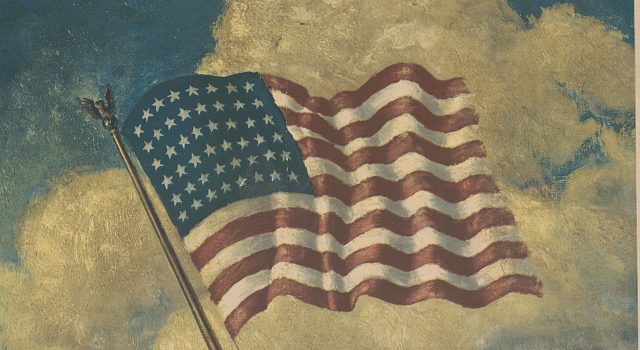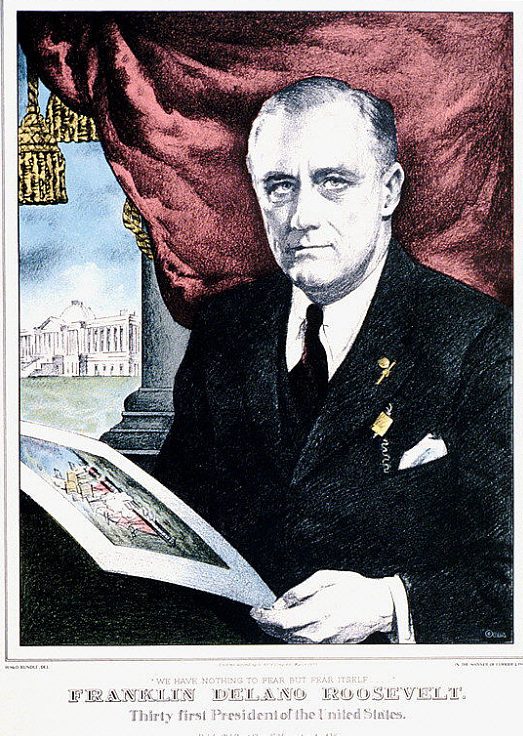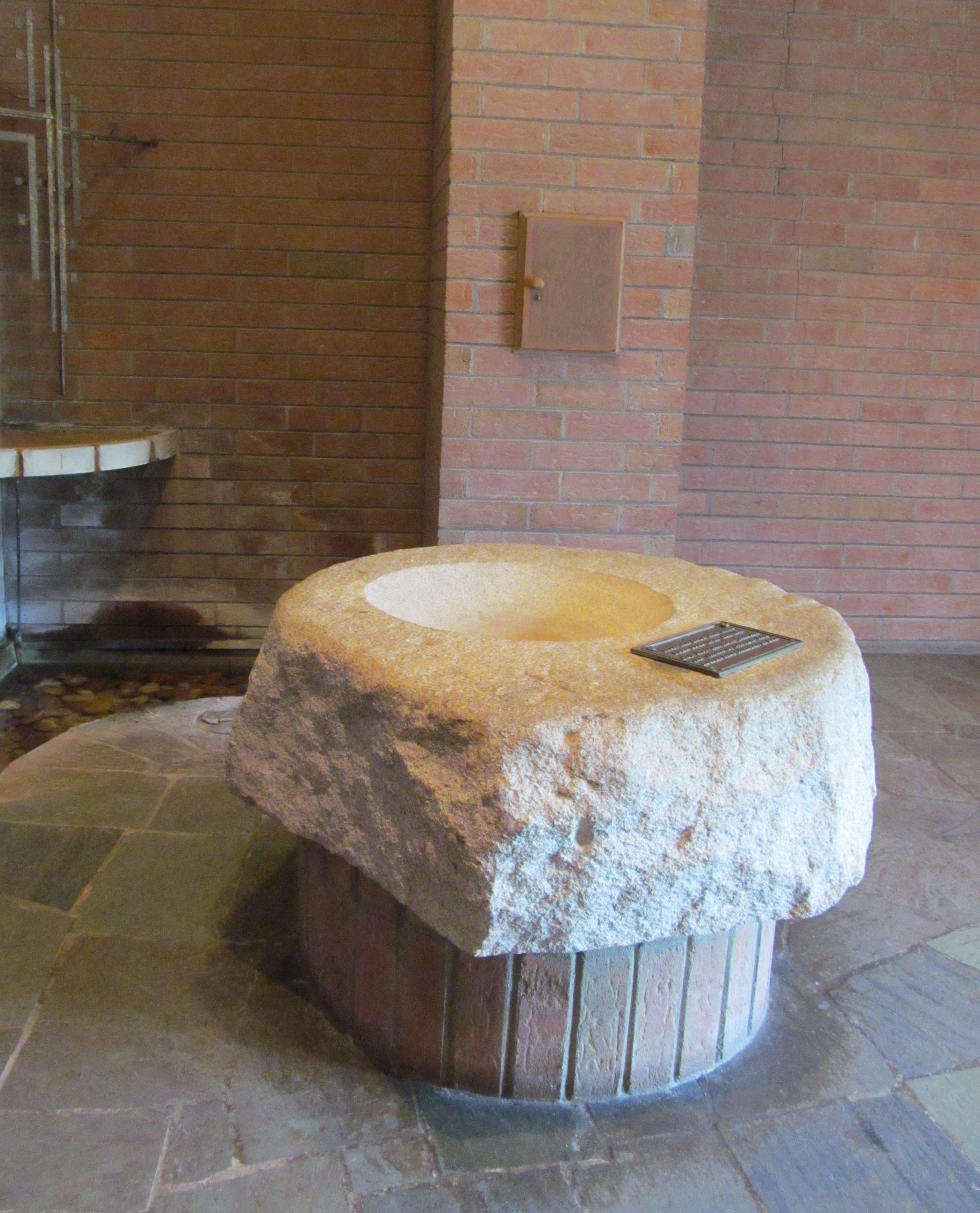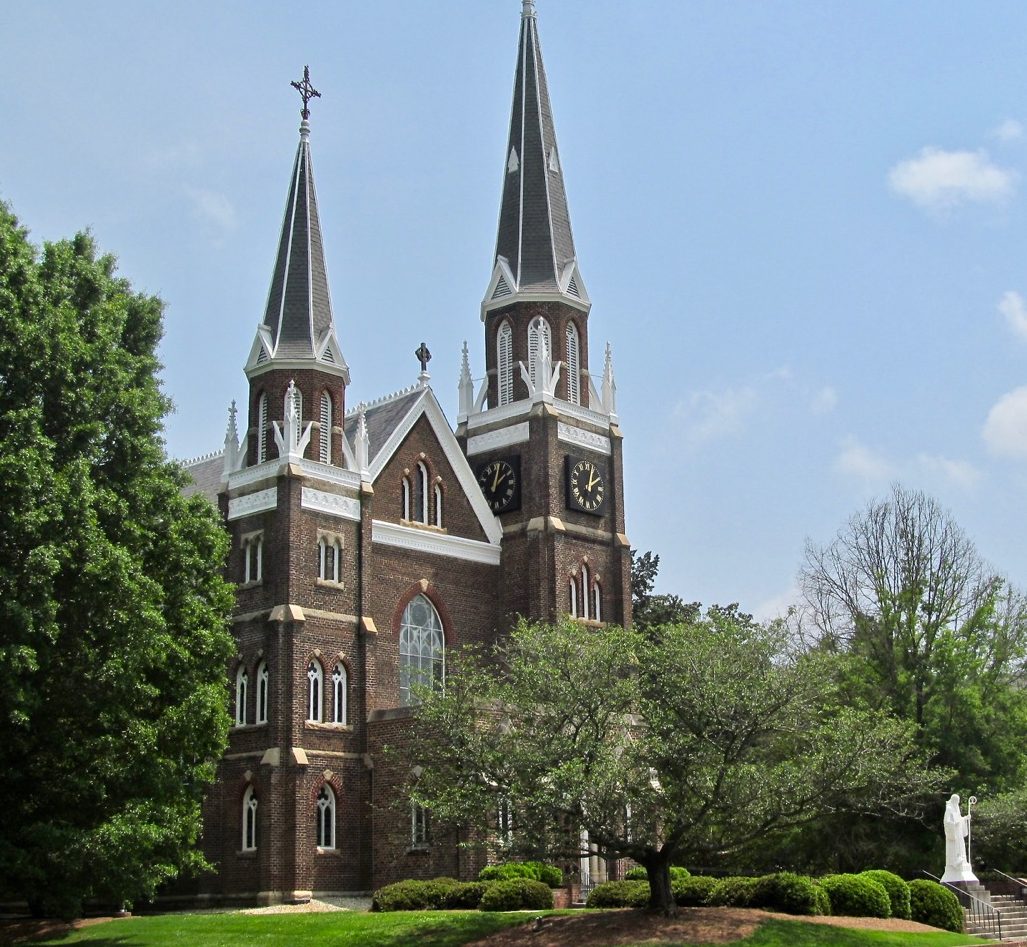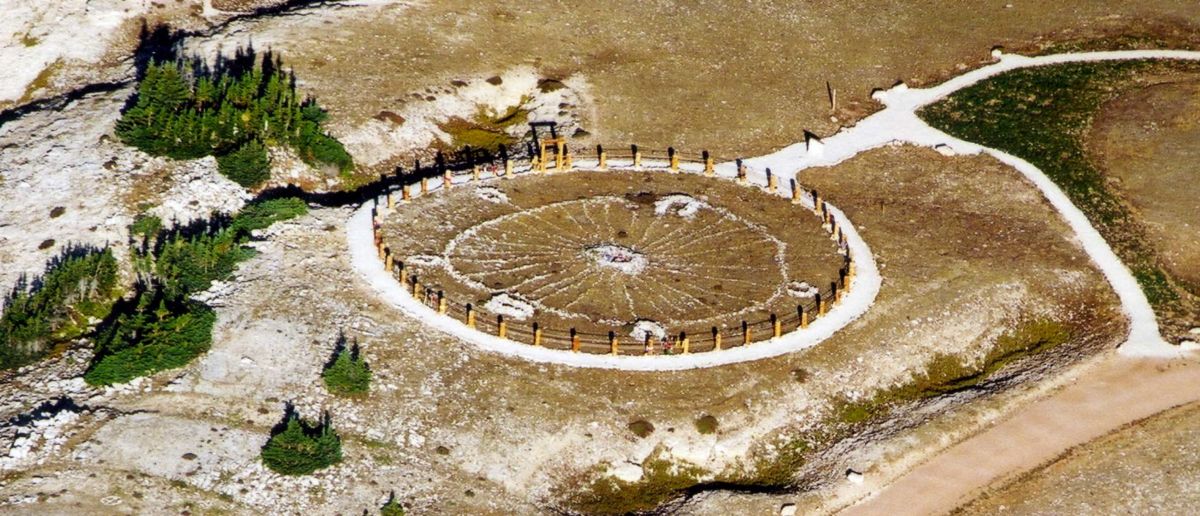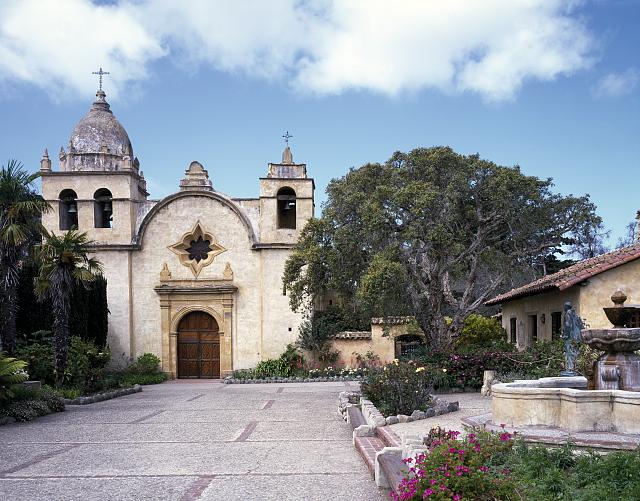San Estevan Del Rey Mission Church, Acoma Pueblo
1629 - present
The mission church of San Estevan del Rey at Acoma Pueblo, built between 1629 and 1641, is considered one of the finest surviving examples of Spanish and indigenous adobe church architecture. The endurance of the church is the more remarkable, given the intermittent resistance of the Acoma people to Spanish colonization and conversion efforts.
The mission church of San Estevan del Rey at Acoma Pueblo, built between 1629 and 1641, is considered one of the finest surviving examples of Spanish and indigenous adobe church architecture. The endurance of the church is the more remarkable, given the intermittent resistance of the Acoma people to Spanish colonization and conversion efforts.
The Oldest Continuously Inhabited Village in the US

Acoma Pueblo (“Sky City”), photographed by Scott Catron, October 4, 2009. (Wikimedia Commons, from Flickr, https://en.wikipedia.org/wiki/File:Acoma_Pueblo_Sky_City.jpg).
Acoma’s residents, today only about twelve families, inhabit what they plausibly claim is the oldest continuously occupied settlement in the United States. Founded between 1100 and 1200 by people thought to have migrated from Chaco Canyon, the pueblo sits on a mesa 7000 feet above sea level and 365 feet above the surrounding plain. For centuries, the Acoma climbed to the mesa’s top by a combination of shallow stairs and toe and handholds carved into the white rock of its steeply sloped sides. Hence the pueblo occupied a strong defensive position, protecting the Acoma from raids by nearby nomadic tribes (the Apache and Navajo). By the 16th century, around 6000 people lived in the village.
Spanish Attempts to “Pacify” Acoma
Don Juan de Onate, the nobleman sent by the Mexican viceroy to “pacify” and settle what is today the Southwestern US, but was then the arid northern frontier of Mexico, authorized a brutal attack on Acoma after his nephew Juan de Zaldivar was killed there in late 1598. Zaldivar led a party who tried to take provisions from the unwilling pueblo community. The Acoma invited Zaldivar and his men to climb up to the pueblo, then attacked them—perhaps because the Spaniards seized sacred turkeys they weren’t given, perhaps because they laid hands on women of the tribe, or perhaps because the Acoma had premeditated an ambush. Zaldivar was slain along with all but four of his men, who survived by jumping off the mesa into soft sand at its base.

Equestrian Statue of Juan De Onate, Onate Monument Center, Alcalde, NM (Wikimedia Commons, from Flickr).
Onate retaliated harshly, sending Zaldivar’s own brother Vicente to subdue the village. He managed to surprise the Acoma by dividing his party and scaling the mesa on two sides. Over 800 Acoma were killed and 500 taken prisoner. Marched to Onate’s base at San Juan, the prisoners were there given severe punishments meted out by age groups. Children under age twelve were to be given to Spanish families to raise; women and young men twelve to 24 were to be enslaved for 20 years; males 25 and older were to be enslaved after having a foot severed. Historian Ralph Keller doubts the amputations were ever performed, since there is almost no mention in the historical record of one-footed native slaves.[1] Still, after Onate resigned his office in 1607, he was tried for mismanaging his office, in part because of his cruelty in punishing Acoma.
Franciscans Establish a Mission at Acoma

View of Acoma Pueblo from the South, photographed by Edward S. Curtis in 1904.
Survivors of the 1599 attack on Acoma rebuilt the pueblo, and by 1629 they had accepted the presence of Friar Juan Ramirez. (According to Franciscan legend, he won acceptance after he caught a child who fell from the mesa top.[2]) Ramirez introduced fruit trees and livestock to the mesa[3] and enlisted native labor to build the large mission church of San Estevan del Rey. It is a simple rectangle, 150 feet long and 40 feet wide, with two square, east-facing bell towers. Its massive adobe walls, up to seven feet thick at the base and two feet thick at their summit, rise 35 feet high. To construct it, Acomans hauled adobe materials (clay, water and straw) up from the plain below the mesa and carried ponderosa pine timbers for ceiling supports and pillars from the San Mateo Mountains, 30 miles away.
During the Pueblo Revolt of 1680, the Acoma killed Ramirez’ successor, Friar Lucas Maldonado—yet left intact the church they had constructed at such pains.[4] The Spanish reoccupied New Mexico in 1692, but did not regain control of Acoma until 1699. After that mission life returned to Acoma. One tyrannical 18th century friar was, according to a disputed legend[5] recounted in Willa Cather’s Death Comes for the Archbishop, thrown over the cliff after pushing the people too far, but there were no more uprisings during Spanish rule.
The Church at Acoma Today

Dancers at the Fiesta de San Esteban (St. Stephan), Acoma Pueblo, New Mexico, photographed by George Wharton James in 1886 (California Historical Society Collection, 1860-1960, USC Libraries Special Collections, 4550).
Most Catholic members of the Acoma tribe today worship in one of two reservation churches built on the plain below the mesa, in Acomita and McCartys. San Estevan remains the mother church of the Acoma parish, yet services are held there only on major feast days. The Acoma, who welcome tourists to their “Sky City,” allow visitors to view the interior of San Estevan—although not to photograph it. The interior walls once bore Acoma-painted frescoes depicting Catholic themes. These were white-washed over during the Pueblo revolt. Today the walls are decorated with symbols such as rainbows and corn, evoking ancient Pueblo spirituality and suggesting that, to a certain extent, the building made by the Acoma ancestors under Catholic direction has been reclaimed as testimony to an older ancestral belief.

A view of the left wall of San Esteban Rey at Acoma Pueblo, photographed by Ansel Adams in 1941 for the National Park Service.
Notes
[1]Keller notes that often after battles with the natives, the Franciscan friars who accompanied Spanish settlement expeditions pled for mercy for the condemned (see p. 84). Certainly it would have been counter-productive from the conquerors’ point of view to maim a person who could provide slave labor in the fields or silver mines. Other historians assume the punishments were carried out—as do present-day Acoma, who vandalized a statue of Onate erected in Alcalde, NM in 1999 by lopping off its right foot (Ward, p. 100).Return
[2]Ward, p. 100; see also Hammons.Return
[3]Milner, et al., p. 18. The Acomans cultivated their corn and other crops on the plains below the rocky mesa. Hence, planting fruit trees on the Mesa necessitated carrying up sufficient soil and water to sustain the trees—a task Acoman women probably performed.Return
[4]The official website of the Acoma Pueblo explains that, since the construction of the church, its upkeep and preservation has been entrusted to a group of Acoma men called the “Gaugashti,” who commit to lifelong caretaking roles.Return
[5]Ward alludes to the event as fact; Hammons prefers a myth probably recounted by the Acoma to disclaim responsibility. She notes a stop on the usual visitors’ tour of Acoma, called the “Site of the Leap of the Padre.” Hammons says that, “according to fiction” a friar was hurled to his death at the spot, “but according to Acoma tradition this Padre jumped off and landed safely in the sand and returned to Old Mexico.” Although some of Zaldivar’s men survived such a leap a century earlier, Hammonds finds “no historical background” for either story.Return
[6]Roake describes the sanctuary interior as she saw it during a visit to Acoma in 2015.Return
Citation
Suzanne Hammons, “On the Padre’s Trail: The Church in Acoma, McCartys, and Acomita,” Voice of the Southwest: News from the Diocese of Gallup, March 19, 2014, https://voiceofthesouthwest.org/on-the-padres-trail-the-church-in-acoma-mccartys-and-acomita/
John L. Kessell, Spain in the Southwest: A Narrative History of Colonial New Mexico, Arizona, Texas, and California (University of Oklahoma Press, 2002).
Lauren Kilroy-Ewbank, “Mission Church, San Esteban del Rey, Acoma Pueblo,” in Smarthistory, November 22, 2015, accessed December 18, 2017, https://smarthistory.org/mission-church-san-esteban-del-rey-acoma-pueblo/.
Clyde A. Milner II, Carol A. O’Connor, and Martha A. Sandweiss, Eds, The Oxford History of the American West (New York: Oxford University Press, 1994)
“Modern Acoma,” Website of the Pueblo of Acoma, http://www.puebloofacoma.org/Modern_Acoma.aspx
Jessica Roake, “How Acoma Sky City has Endured for a Millennium (and Still Won’t Go Electric),” Atlas Obscura (August 12, 2015), https://www.atlasobscura.com/articles/how-acoma-sky-city-has-endured-for-a-millennia-and-still-wont-go-electric
“San Estevan del Rey Mission Church, New Mexico,” American Latino Heritage, a website of the National Park Service, https://www.nps.gov/nr/travel/american_latino_heritage/san_estevan_del_rey_mission_church.html
Greg Ward, “A History of Acoma Pueblo,” Rough Guide to Southwest USA, 7th ed., (2016), p. 100.
